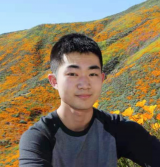Investigating the non-canonical role of JARID2 in hematopoietic stem cell self-renewal

Mentor: Dr. Grant Challen
Hematopoietic Stem Cells (HSCs) are stem cells, which are capable of developing into other cells, found in the bone marrow that are responsible for generating the various kinds of blood cells found within the human body. HSCs undergo a process called hematopoiesis, where the HSC will differentiate into a progenitor cell, which continue differentiating into increasingly more mature cells. To maintain the population of HSCs, HSCs are also capable of self-renewal. Mutations in HSCs lead to Myeloproliferative Neoplasms (MPNs): diseases that are characterized by an excess population of blood cells. These diseases often stem from a mutation in a singular HSC, leading to overactive self-renewal that creates a subpopulation within the overall HSC population comprised of clones of the mutant HSC. MPNs often evolve into secondary acute myeloid leukemia (sAML), an aggressive disease that does not respond well to chemotherapy and has a low survival rate. Studying the hematopoietic system, in both normal and malignant hematopoiesis, would be advantageous in finding therapeutic targets for not just sAML but other diseases related to malignant hematopoiesis as well. Recently, deletions of the gene JARID2 have been identified within a significant population of sAML patients, suggesting that JARID2’s deletion is important for disease progression. The JARID2 protein is currently known to interact with a protein complex, PRC2, that helps in silencing transcription of genes through a process called methylation. However, recent studies have also suggested that the JARID2 protein has functions independent of the protein complex PRC2 that it is currently known to interact with. In normal and diseased HSCs, inhibiting JARID2’s expression affects cells in ways not consistent with just its known interactions with PRC2. The goal of this project is to better understand the role of the JARID2 protein in HSCs as a potential future target for more curative MPN treatments. To do so, we will be generating mutant variations of the JARID2 gene to be introduced into cell lines that have JARID2 removed, using lentiviruses to integrate the JARID2 gene into the cell’s genomic DNA. Certain regions of JARID2 have been identified to be able to interact with other proteins and DNA, and so by generating mutations at these regions that reduce or remove function of these regions of the protein, we will be able to understand which regions are responsible for repression of HSC self-renewal.

